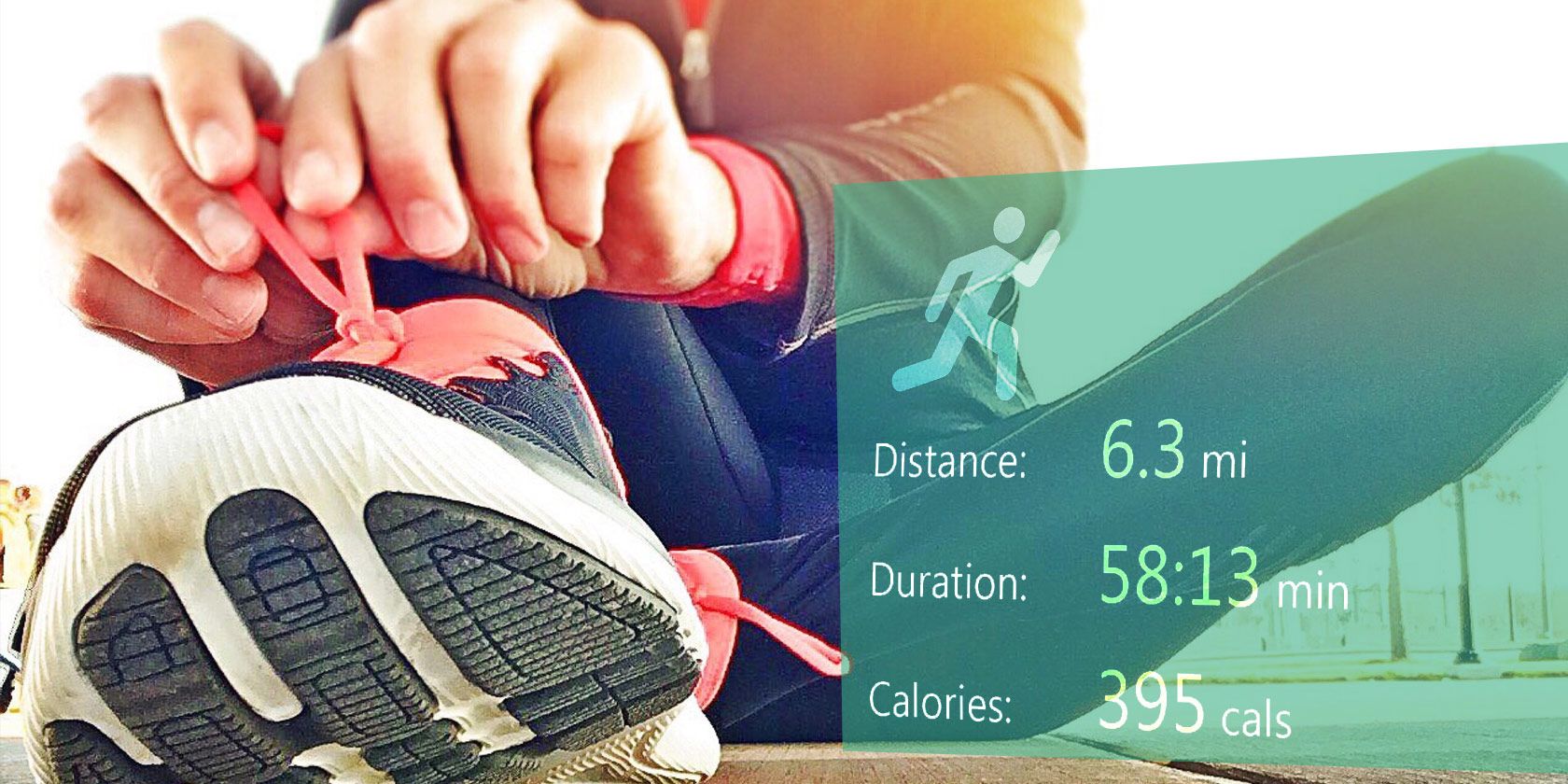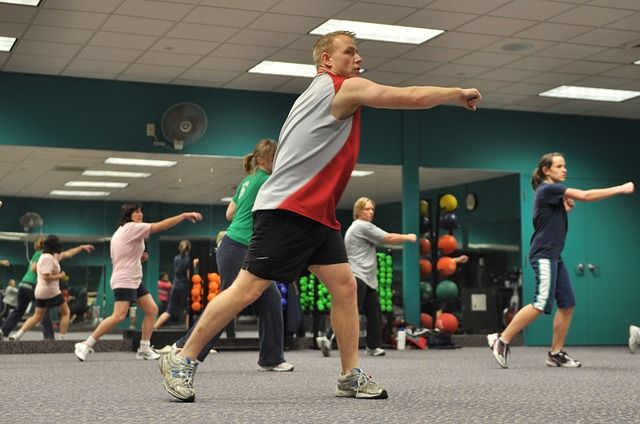Fitness tracking wearables are incredibly popular at the moment, and for good reason. Through a variety of sensors, they are able to calculate your levels of physical activity: the distance you travel, how many steps you take, the number of calories you burn, and much more.
The best part is that most of these wearables can be slipped onto the wrist, and they do the work without any manual input. You don't have to worry about turning a particular tracking mode on or telling the device to start monitoring your activity -- it's done automatically throughout the day.
However, if you've ever used a fitness tracker before, then you already know their biggest flaw: they just aren't very accurate. They don't always calculate the right number of steps, calories burned, or even the total length of time someone was active.
But there is hope. A new type of wearable may soon be making the rounds which relies on a person's sweat to calculate important health info. This might sound a little gross at first, but with the right data -- and cleaning products? -- the benefits could be well worth it.
It's not just about the type of info that can be collected -- like levels of sodium, potassium, glucose, and lactate -- but also about the accuracy of these readings. It turns out that sweat tracking wearables are more accurate than modern fitness trackers could ever hope to be.
With a fifth of a drop of sweat, these sensors can identify a variety of things about the wearer, like if they're dehydrated, getting enough exercise, or even if they have high levels of sodium and glucose in their body at this very moment.
Reasons to Start Using Sweat Sensors
Of course, there's a lot more that sweat tracking wearables can offer other than just being more accurate, and many of these reasons are quite practical. If you're feeling reluctant or skeptical, here are a few reasons that may well convince you to hop the fence.
1. Personal Research
Due to the increased amount of information sweat-tracking wearables can collect, they can be used for personal research and monitoring -- and not just for athletes, but for everyone.
While there aren't yet any consumer-facing sweat sensor apps on the market, the Air Force Research Lab completed its first successful test of its own sweat sensor patch and app last year. The AFRL is currently working on developing additional biomarkers for the gadget, which will allow users to monitor more health data.
Rather than only monitoring activity like steps, miles, or even heart rate, these sweat sensors would allow you to track significantly more complex medical information in real time.
Another big benefit that comes to mind is the lack of reliance on particular motion patterns. For example, when I wear my Fitbit to do yoga, lift weights, or go kayaking, it doesn't record these activities as steps, miles, or calories burned, because I'm not using the generic hand-swinging walking motion many Fitbits rely on to track your exercise.
However, if I started using a sweat sensor, I would likely be better able to track the effectiveness of my workouts because the sensor would track my sweat and how much I've exerted myself. In comparison to fitness trackers, which can only monitor a handful of stats, sweat-tracking wearables are more informative.
Anyone could then take this data and use it to better inform which workouts are most worth their time, given each person's unique fitness goals.
2. Sensor Versatility
The technology used in sweat tracking wearables -- like the models created by the researchers at the University of California, Berkeley and Stanford -- is both versatile and adaptable.
These sensors are small and flexible enough that they could be embedded in a variety of clothing items, including hats, shirts, or even socks. This is awesome because it gives people a variety of options to choose from when picking out wearable devices instead of being limited to only wrist-mounted devices.
When the team of researchers from University of California, Berkeley and Stanford University conducted their study, they used sensors embedded in sweatbands, which sent real-time data to an app. Sweatbands might not be your idea of a trendy exercise accessory, but this study does show that there are more options for us data-fanatic fitness gurus than wearing that extra band on your wrist.
3. Affordability
Another great feature of the technology used for sweat tracking is that it's relatively inexpensive. That means that it could be easily implemented in a disposable format if needed.
Place a sticker on your body, wear it for your workout and toss it when you're done. Simple and clean!
Believe it or not, a company called Kenzen has already come up with a sweat-tracking wearable that is also disposable. The ECHO Smart Patch comes in the form of a disposable patch that monitors hydration, lactic acid, and calories by using sweat, and it transmits that information via Bluetooth to a smartphone.
The ECHO patch is unique because it is placed directly on your torso, under your clothing. According to the company's website, this location is suggested because of its "highly accurate and reliable analysis of vital signs and sweat." After seven days, the patches can be thrown out, and they are eco-friendly too. Pretty awesome, right?
The ECHO Smart Patch isn't available for consumer purchase yet, and no pricing data is available on Kenzen's website. However, as a disposable option, it's likely ECHO could be one of the more affordable sweat sensors out there.
On the other hand, if you'd rather have a sweat sensor that you wouldn't have to throw out after a few uses, you might be more interested in the flexible plastic patches developed by the University of California, Berkeley.
These plastic patches can be incorporated into headbands or wristbands, and are meant to warn you about changes in electrolytes or metabolites. Ali Javey, who helped develop the sensors, says:
"The idea is to have this thumbs-up or thumbs-down device that will give real-time information: it could provide an alarm that you need to take some medication, or that you’re getting dehydrated and need to drink some water."
However, as no final product marketed to consumers has resulted from these plastic patches yet, it's difficult to say what the retail price could be.
4. Advanced Health Info
The kind of information you can collect from your sweat is nothing short of amazing. That's what makes these type of wearables such well-rounded health monitors.
But what's even more interesting is that they can be used to track some pretty advanced stuff. For example, beyond tracking what was already mentioned above, sweat sensors could also be used to help people with medical issues. They'll never be as accurate as blood tests, but still very useful nonetheless.
For example, Javey says that by looking at chemicals found in sweat, researchers might be able to better understand the mental health of a person. He points out that past research has suggested some biomarkers found in sweat correspond to symptoms of depression.
If people could track their chemical patterns and profile what their body chemistry looks like over time, researchers might be able to draw new conclusions about mental health and other kinds of disorders and, perhaps, find more effective treatment methods.
The medical and health implications of this are obvious. You could don a sweat-enabled wearable -- even if you're not active throughout your day -- to monitor not just you but your environment as well. If you come into contact with hazardous chemicals, you'll know that right away.
Wearable Sweat Sensors: Yes or No?
In addition to Kenzen's disposable sweat trackers, there is a lot of research currently being done on this technology. That's because scientists and technologists alike are trying to push the boundaries in an effort to see what else this technology can do.
It's possible we will be able to track a whole lot more than the stats mentioned above by the time sweat monitoring tech goes mainstream. Sadly, though, there's no telling how long it will take for this technology to become available. It could be months or it could be years. Only time will tell.
What do you think? Would you give up your current fitness tracker for a sweat-sensing tracker in the future? Would you use both? Tell us your thoughts in the comments section below!
Image Credits: Brandon Morgan, Thomas Schweighofer, Life of Pix, janeb13, Viktor Hanacek, Martins Zemlickis







